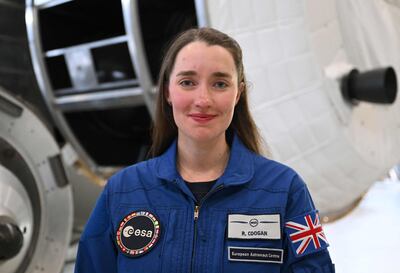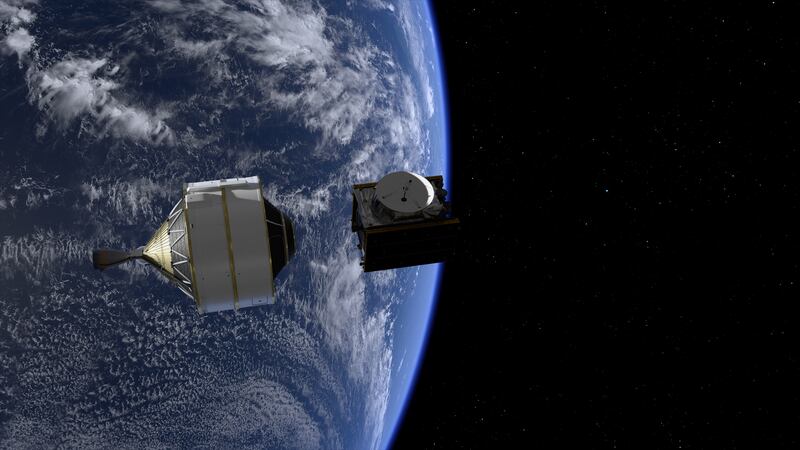Europe must “step up” and intensify its capabilities in space, the chief of the European Space Agency said on Wednesday.
ESA Director General Josef Aschbacher said the agency has a “strong partnership” with Nasa, which will continue, but it was time for Europe to do more.
“Europe needs a wake-up call,” Mr Aschbacher said at a news conference.
“Because what is the reality is that today, Europe is, of course, thankfully flying with other partners to space. In the past with Russia and America, today with America.
“The partnership is extremely strong and extremely good. And let me just be crystal clear that I value this a lot that we have a very strong partnership and this will always continue.”
He spoke about a report called Revolution Space, which was compiled by a panel of independent experts, which called for Europe to become more independent or more autonomous.
“Europe needs to step up and Europe needs to intensify its capabilities in space,” he said.
“So therefore, I will ask politicians, decision makers in ESA and the member states at the space summit in November about what they believe Europe should be doing.”
David Parker, director of human and robotic exploration at ESA, said: “The exploration programme now has grown in Europe. From a sad state a few years ago, it was in a state of decline, let us say seven, eight, nine years ago … we've reversed that trend with great support of our member states.
“We have put together what was seven pieces into one single exploration programme and been supported by the member states through the past three ministerial council meetings to grow it into a programme that's growing, but it is only a start.”
He said ESA’s astronauts will be sent first to the lunar gateway, “humanity's most distant research outpost”.
“Europe is right at the heart of this programme to have a permanent presence around the Moon with a lunar gateway and from 2025 this station will become operational and we have already agreed that three ESA astronauts will fly on Artemis missions to the gateway.”
The conference heard from several astronaut candidates from the 2022 cohort, announced in November, who spoke about their experience so far.
Rosemary Coogan, a career astronaut from the UK who began training at the European Space Agency's astronaut centre in Cologne, Germany, last month, said that it has brought her “a huge amount of enjoyment” and one of the highlights of her training was a “trip to the biology labs”.
The agency has its own unit, known as Biolab facility, in the Columbus laboratory on the International Space Station, where astronauts conduct various scientific experiments.
Speaking at her first news conference as an ESA astronaut candidate, Ms Coogan said the first month of basic training was “extremely varied”.

“We've had a lot of different experts come in and share their knowledge.
But I think one of the highlights has been taking the trip to the biology labs and starting to look at all the different microscopes, some of which we have on the space station, starting to do pipetting of samples and completely sterile environments and trying to imagine — I think we all are — how that might be in a microgravity environment in the next few years.”
An astrophysicist with two master's degrees from Durham University and an astronomy doctorate from Sussex, Ms Coogan was selected to join the ESA's astronaut training programme last year, after beating more than 22,500 applicants.
She is training alongside four other astronaut candidates: Sophie Adenot of France; Spain's Pablo Alvarez Fernandez; Belgian-Luxembourgish engineer Raphael Liegeois; and Marco Sieber, from Switzerland.
If successful, the 32-year-old, who was born in Northern Ireland, will become the UK's third astronaut, following Helen Sharman, who became the first Briton in space in 1989, and Tim Peake, who went to the International Space Station in 2015.
ESA astronauts usually complete a minimum of three to four years of training before flying to space for the first time.
Fellow candidate and career astronaut Ms Adenot said the candidates feel bonded as a team already.
“We [have got] to know each other and feel a bit better since the basic training started,” she said.
“And I can tell you that I was very impressed to meet all of the other talents in the teams. And now our hard work is going to be to be able to go from individual talent to collective wisdom, thanks to also our mentors of the previous class.”
Frank De Winne, head of ESA's European Astronaut Centre, said, if successful, the first ISS mission for one of the astronauts could be as early as 2026, but the aim is to give all five astronauts the opportunity to go to space by the end of the decade.
Basic training is the first phase of astronaut training, which takes about 13 months, and includes scuba diving to prepare for spacewalks, rigorous fitness assessments, and getting introduced to the fundamentals of space flight.
Once basic training is complete, the candidates will become certified astronauts and ready to embark on the second phase, known as pre-assignment training.
This includes advanced training in specific areas, such as systems training, vehicle training, robotics, and extravehicular activity training, or spacewalks.
The third and final phase is mission-specific training, which is tailored to the tasks and experiments that astronauts will perform during their mission.
Last year, ESA unveiled two other UK citizens — John McFall and Meganne Christian — as new astronaut candidates.
Former Paralympian Mr McFall is part of a feasibility study to see if he can fly as a disabled astronaut while Ms Christian is a reserve astronaut who could join the programme if someone else drops out.







